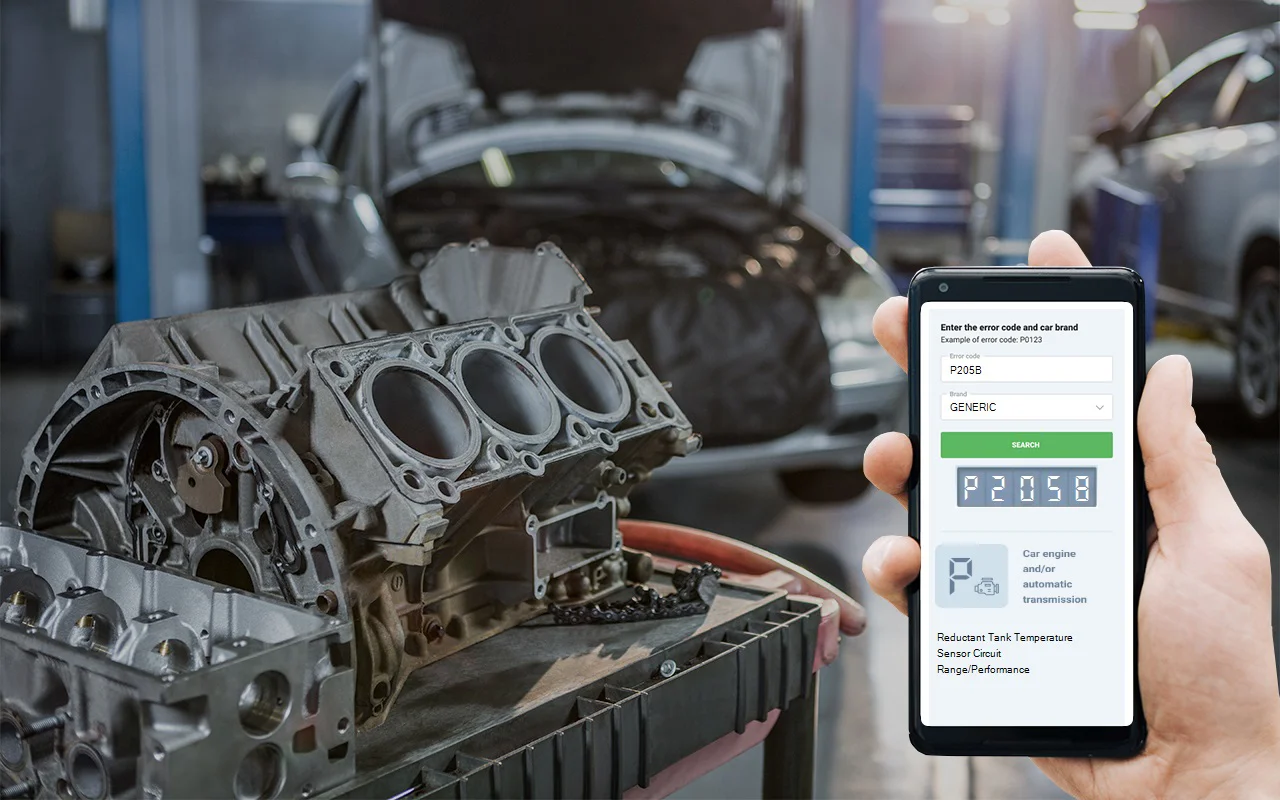Let me break down what’s really happening when you see a P205B code pop up. In my experience, this code means your vehicle’s computer-your PCM-has stopped getting a proper signal from the reductant tank temperature sensor. Now, that sensor’s tucked away in the diesel exhaust aftertreatment system, quietly measuring both how much diesel exhaust fluid (DEF, sometimes just called reductant) you’ve got and its temperature. Why’s that matter? Well, the PCM relies on this info to keep your emissions system in check. If the sensor starts sending readings that make no sense-maybe it thinks the tank’s boiling hot or ice cold when it’s not-the PCM throws up its hands and triggers the P205B code. Bottom line? This system is all about keeping your diesel running clean and legally on the road.
DTC P205B
Causes of P205B
From my time under the hood, the number one offender for a p205b code is usually a bad reductant tank temperature sensor. But don’t be fooled-wiring can cause just as much trouble. I’ve seen everything from chewed wires (thanks, rodents) to crusty connectors from years of road salt and moisture. Occasionally, it’s the selective catalytic reduction (SCR) controller acting up, or a rare fluke with the PCM or its software. Here’s what I typically find when hunting this code down:
- Reductant tank temperature sensor gone bad
- Wiring or connectors that are broken, corroded, or shorted out in the sensor’s circuit
- SCR controller that’s acting up
- PCM issues-sometimes a glitchy module or outdated software
Symptoms of obd code P205B
When this trouble code’s active, the first thing you’ll notice is the check engine light staring back at you. More often than not, you’ll also get a DEF warning light on the dash. Some trucks-especially the newer ones-will throw themselves into limp mode. That means sluggish acceleration and a general feeling that your engine’s just not pulling like it should. Ignore those warnings, and you might be looking at a no-start situation after you shut things down. So if you’re seeing any of these signs, don’t wait around. I’ve seen this code show up not just on American trucks, but also on brands like Ford, Volvo, and Renault.

Diagnosis of obd2 code P205B
Let me walk you through how I go after a sa 16 dtc p205b64. First rule-start simple. Too many folks jump to conclusions and overlook the little things. Here’s my usual process:
- Check the DEF level and make sure the fluid’s not contaminated or low. You’d be surprised how often that’s the whole problem.
- Take a close look at the wiring and connectors on the reductant tank temperature sensor. I’ll give those connectors a gentle wiggle-sometimes that’s all it takes to uncover a flaky connection or a broken wire hiding in plain sight.
- If the wiring looks solid, I hook up a scan tool and compare what the sensor’s reporting to the actual tank temperature. If the tank’s cold, the sensor should show cold-and vice versa.
- When a sensor’s readings are all over the place, I grab my multimeter and check its resistance, using the specs from the service manual. If it’s out of range, there’s your bad sensor.
- If both the sensor and wiring check out, next stop is the SCR controller, and in rare cases, the PCM. Sometimes it’s just a matter of updating the software, other times the controller’s bitten the dust.

Common Mistakes with P205B trouble code
A classic mistake I see all the time is folks instantly swapping out the sensor before even glancing at the wiring or connectors. That’s a quick way to waste cash if it’s just a corroded pin or a loose plug. Another misstep? Not looking for related codes-sometimes there’s more going on, and you’ll miss the real culprit if you ignore the bigger picture. And don’t forget the basics: if you skip checking the DEF level or its quality, you’re asking for unnecessary headaches. Trust me, always start with the simple stuff first.

Seriousness of P205B engine code
This is one of those codes you can’t afford to brush off. When P205B shows up, your emissions system isn’t working like it should, and you could quickly end up in limp mode-or, worse, stranded when your truck refuses to fire back up. That’s not just inconvenient, it’s downright dangerous if you’re out on the highway or miles from help. Waiting too long can wreck expensive parts like the SCR catalyst or even harm the PCM. Things can unravel fast if you ignore this code, so don’t put it off.
Repair Solutions for P205B code
Most of the time, the fix is pretty straightforward-swap out the faulty reductant tank temperature sensor. But don’t rush it. If you spot any damaged wiring or crusty connectors, repair those first. In some cases, replacing or reprogramming the SCR controller does the trick. PCM troubles are rare, but a software update or (in extreme cases) a replacement might be needed. Here’s my go-to list:
- Replace the bad reductant tank temperature sensor
- Fix or replace any damaged wiring or connectors you spot
- Update or swap out the SCR controller if diagnostics point that way
- Update PCM software if you find a programming fault
Conclusion
Here’s the takeaway: P205B means your DEF tank temperature sensor isn’t talking to your vehicle right, and that can turn into a serious headache if you let it slide. Start with the basics-fluid level, wiring, connectors-before throwing parts at the problem. The risk’s high with this one: you could get stranded or end up shelling out for pricey repairs if you ignore it. What I’ve learned over the years is that the best fix comes from working through the system step by step, starting simple and only moving to deeper diagnostics if you have to. Don’t wait-sort this out before it becomes a major problem.




